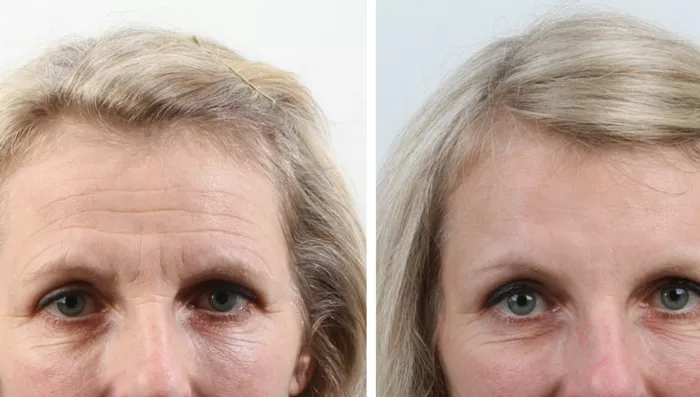As we age, the effects of gravity, sun exposure, and natural loss of collagen and elastin can cause the skin on our face to sag and develop wrinkles. While surgical facelift procedures have long been a popular option for facial rejuvenation, advancements in non-surgical techniques have provided effective alternatives. In this article, we will explore various non-surgical facelift options and discuss their effectiveness in helping you achieve a more youthful appearance.
Understanding Non-Surgical Facelifts
Non-surgical facelifts refer to a range of cosmetic procedures and treatments that aim to rejuvenate the face without the need for invasive surgery. These procedures typically involve the use of minimally invasive techniques or non-invasive treatments to address specific concerns, such as sagging skin, wrinkles, and loss of volume.
While non-surgical facelifts may not provide the same level of dramatic results as surgical facelifts, they offer several advantages, including shorter downtime, fewer risks, and more affordable options. The effectiveness of non-surgical facelifts can vary depending on the specific treatment, individual factors, and desired outcomes.
Common Non-Surgical Facelift Options
Dermal Fillers
Dermal fillers are injectable substances that add volume to specific areas of the face, reducing the appearance of wrinkles, lines, and sagging. Hyaluronic acid fillers, such as Juvederm and Restylane, are commonly used for non-surgical facelifts. They can restore lost volume, improve facial contours, and provide a more youthful appearance. The results of dermal fillers are immediate, and the treatment typically requires little to no downtime. However, the effects are temporary, lasting around 6 to 12 months, depending on the product used and individual factors.
Botox and Dysport
Botox and Dysport are injectable neuromodulators that work by temporarily relaxing the muscles responsible for wrinkles and lines, such as crow’s feet and forehead furrows. By reducing muscle movement, these treatments can smooth out wrinkles and provide a more youthful appearance. The results of Botox and Dysport typically last around 3 to 6 months, and the treatment is quick with minimal downtime.
Thread Lift
A thread lift is a minimally invasive procedure that involves inserting dissolvable threads into the skin to lift and tighten sagging facial tissues. These threads create a supportive structure that helps lift and reposition the skin, providing a more youthful contour. The procedure is performed under local anesthesia and generally requires minimal downtime. Results can last up to a year or more, depending on the type of threads used and individual factors.
Ultherapy
Ultherapy is a non-invasive procedure that uses focused ultrasound energy to stimulate collagen production deep within the skin. This treatment targets the underlying layers to lift and tighten sagging skin, particularly in the neck, chin, and brow area. The results of Ultherapy develop gradually over several months as collagen production increases. While individual experiences may vary, the effects can last up to 1 to 2 years.
Laser Treatments
Laser treatments, such as fractional laser resurfacing and laser skin tightening, can improve skin texture, reduce wrinkles, and stimulate collagen production. These treatments use targeted laser energy to heat the deeper layers of the skin, promoting skin tightening and rejuvenation. The results of laser treatments can vary, with some individuals experiencing noticeable improvements in skin texture and tightness. Multiple sessions may be required for optimal results.
Chemical Peels
Chemical peels involve the application of a chemical solution to the skin, which causes exfoliation and the removal of damaged outer layers. This process stimulates collagen production and reveals fresher, smoother skin with improved texture and tone. Chemical peels can reduce the appearance of fine lines, wrinkles, and sun damage. The results of chemical peels can vary depending on the depth of the peel and the individual’s skin type. Multiple treatments may be necessary to achieve desired results.
Choosing the Right Non-Surgical Facelift
Selecting the most effective non-surgical facelift option depends on several factors, including your specific concerns, desired outcomes, budget, and individual factors such as skin type and overall health. It is essential to consult with a qualified and experienced cosmetic professional who can assess your needs and recommend the most suitable treatment option for you.
During your consultation, the practitioner will evaluate your facial structure, skin condition, and discuss your goals. They will explain the benefits and potential risks of each treatment option, as well as the expected outcomes and any necessary maintenance or follow-up treatments.
It’s important to have realistic expectations when considering non-surgical facelift options. While these treatments can provide noticeable improvements and rejuvenation, they may not achieve the same level of results as surgical facelift procedures. However, non-surgical facelifts can be a great option for individuals who prefer a less invasive approach or who are not yet ready for surgery.
Conclusion
Non-surgical facelift options provide effective alternatives to surgical procedures for individuals seeking facial rejuvenation. Dermal fillers, Botox, thread lifts, Ultherapy, laser treatments, and chemical peels are among the common non-surgical facelift options available. The most effective option for you will depend on your specific concerns, desired outcomes, and individual factors.
Consulting with a qualified cosmetic professional is crucial to determine the most suitable non-surgical facelift option for your needs. They can assess your facial structure, discuss your goals, and recommend the appropriate treatment. Remember to have realistic expectations and understand that while non-surgical facelifts can provide significant improvements, they may not offer the same level of results as surgical procedures.

